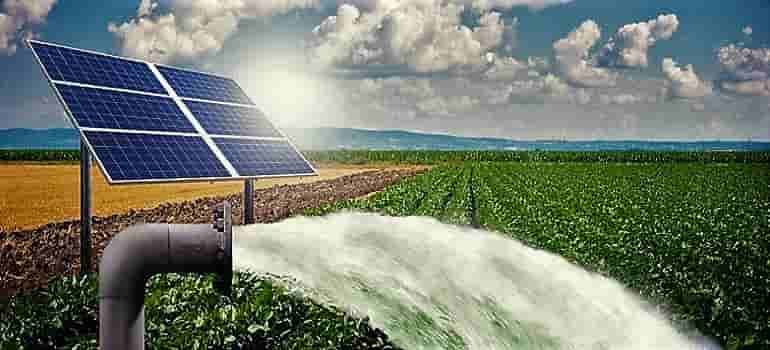
A subsidy-led approach alone may not achieve the target of one million solar pumps by 2021 and the government must target marginal farmers, an independent study by the Council on Energy, Environment and Water (CEEW) said on Thursday.
Farmers who do not possess electric pumps should be targeted with smaller solar pumps as they would find solar pumps attractive at even 30 per cent subsidy, provided affordable financing is available, said the report released at the national dialogue on ‘Solar for Irrigation in India’.
The CEEW research, based on a primary survey of 1,600 farmers across ten districts in Uttar Pradesh, found that farmers using electric pumps were dissatisfied due to unreliable power supply, depleting water tables and high expenditure on diesel.
The study said that 40 per cent of these farmers, especially diesel pump owners, were willing to switch to solar pumps to avail benefits such as zero operational costs, ease of use throughout the day and cost savings on diesel.
“However, only a subsidy-led approach may not be sufficient to achieve the government target of one million solar pumps by 2021. A 30 per cent capital subsidy on one million solar pumps would entail an outlay of nearly Rs 135 billion, twice the annual budget of New and Renewable Energy Ministry,” it said.
Delivering the keynote address at the event, NITI Aayog CEO Amitabh Kant said that access to reliable and affordable irrigation was “one of the most important enablers to increase agricultural productivity and incomes for farmers”.
“Solar pumps can strengthen Indian agriculture by fulfilling unmet irrigation needs while reducing the burden of subsidies on the government and increasing farmers’ resilience to climate change.
“To scale up solar pumps, we must strive to create bottom-up demand by focusing on technology demonstration and raising awareness levels among farmers,” Kant said.
In India, 1,42,000 solar pumps have been deployed till date. More than 50 per cent of the solar pumps have been deployed in Andhra Pradesh, Chhattisgarh, Uttar Pradesh, and Rajasthan.
Abhishek Jain, Senior Programme Lead at CEEW, said that to scale up solar pumps, the government must adopt context-specific deployment strategies, improve targeting of its subsidies, adopt a customer-centric approach, work with enterprises to bring down costs of the pumps, and focus on improving awareness about the technology.
“In Uttar Pradesh, we found that only 27 per cent farmers had heard of solar pumps, less than 15 per cent had seen a solar pump in reality or on television, and only two per cent had heard of government schemes related to solar pumps.
“Deploying five solar pumps in each block of the country, prioritising areas with good groundwater situation, would have a significant demonstration effect on farmers to generate bottom-up demand for the technology,” he said.
Despite the existing 19 million electrical pumps and about nine million diesel pumps, 53 per cent of India’s net sown area remains unirrigated.
Source: IANS
ALSO READ:
Skanska Launches First Perovskite Solar Cell Application in Office Buildings with Saule Technologies
Renewable Energy and Improved Cooling Technologies Key to Reduce Water Use in India’s Power Sector

